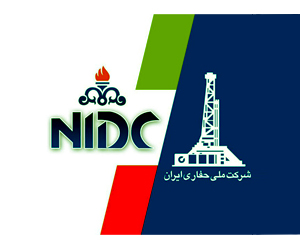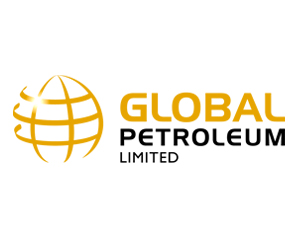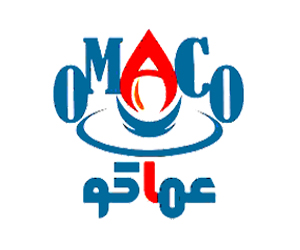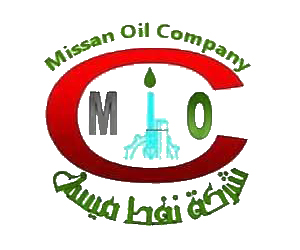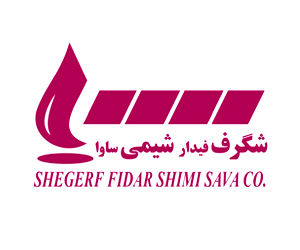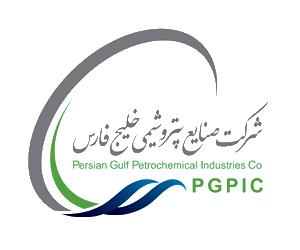
Scientific Guide to Bulk Caustic Soda Purchase: A Strategic Market Analysis
Scientific Guide to Bulk Caustic Soda Purchase: A Strategic Market Analysis
Published on: September 18, 2025
Last Updated: September 18, 2025
Author: Dr. Kavian Shimi, Senior Analyst in Chemical Markets & Supply Chain Strategy
(Estimated Reading Time: 12 minutes)
A bulk caustic soda (sodium hydroxide) purchase is a multifaceted strategic decision that extends far beyond a simple commercial transaction. As one of the most vital industrial alkalis, this chemical plays an irreplaceable role in the value chains of industries such as aluminum, pulp and paper, textiles, and petrochemicals. A profound understanding of market complexities, technical product analysis, and logistical risk management is essential to ensure your business's profitability and operational sustainability. This guide provides an analytical and scientific framework for an intelligent, safe, and economical purchase.
"A bulk caustic soda purchase is a process of market reverse-engineering. By analyzing the end-demand of your industry, you discover the optimal intersection of quality, price, and logistics at the source."
This article systematically dissects the key factors influencing the bulk purchase of caustic soda. From analyzing global price volatility to understanding the subtle differences in Certificates of Analysis (COA) and optimizing international freight costs, we will equip you to make the best possible decision.
main post and buying Caustic Soda
Deep Market Analysis: The Driving Forces of Bulk Caustic Soda Prices
For any bulk caustic soda purchase, understanding the market ecosystem is a prerequisite. The commodity's price is not determined linearly but is influenced by a network of macroeconomic, geopolitical, and industrial variables. A precise analysis of these factors allows you to forecast future trends and minimize the risk of purchasing at unfavorable prices.
1. Pricing and Market Volatility Models
The price of caustic soda is heavily dependent on its production cost, which is governed by the chlor-alkali process. This energy-intensive process is directly affected by global energy prices, particularly natural gas and electricity. According to reports from ICIS (Independent Commodity Intelligence Services), a 10% increase in energy prices can lead to a 3-5% rise in the production cost of caustic soda.
1.1. Macroeconomic Factors
Global economic growth, especially in emerging economies like China and India, increases demand for industrial goods (aluminum, paper), which in turn drives up demand for caustic soda. Monetary policies of central banks and currency exchange rates also impact international pricing. For instance, a stronger US dollar can increase the price of caustic soda for buyers transacting in other currencies.
1.2. Supply and Demand Equilibrium
The balance between global production capacity and industrial demand is the most significant driver of price volatility. Major corporations like Dow Chemical, Olin Corporation, Westlake Chemical, and Formosa Plastics play a decisive role on the supply side. Any planned or unexpected shutdowns at these producers' plants (due to maintenance or incidents) can quickly cause a temporary shortage and a price surge in the market. Market data shows that spot prices for caustic soda can fluctuate by up to 20% in a single quarter.
2. The Critical Importance of Technical Analysis and Purity
A bulk caustic soda purchase without a thorough and scientific review of the Certificate of Analysis (COA) is a major risk. The standard industrial purity for caustic soda flakes typically ranges from 98% to 99.5%. However, other crucial parameters must be carefully examined.
2.1. Key Impurities and Their Impact
Impurities such as sodium chloride (NaCl), sodium carbonate (Na₂CO₃), and sodium sulfate (Na₂SO₄) can negatively affect industrial processes. For example:
- In the Aluminum Industry (Bayer Process): An excessive amount of Na₂CO₃ (usually above 0.5%) can cause unwanted precipitation and reduce the efficiency of alumina extraction.
- In the Textile Industry: The presence of iron (Fe) can cause stains on fabric during the dyeing stages. The permissible limit for iron is typically below 5 ppm (parts per million).
- In the Food Industry: Heavy metals like lead (Pb) and mercury (Hg) must be at extremely low levels to comply with food safety standards.
| Technical Parameter | Industrial Grade | Rayon Grade | Food Grade | Considerations for the Buyer |
|---|---|---|---|---|
| Purity (NaOH %) | 98.0 - 99.5% | Min 99.0% | Min 99.5% | Higher purity generally means a higher price. |
| Sodium Carbonate (Na₂CO₃ %) | Max 0.8% | Max 0.4% | Max 0.2% | Critical for industries where precipitation is an issue. |
| Sodium Chloride (NaCl %) | Max 0.15% | Max 0.05% | Max 0.05% | Can cause corrosion in equipment. |
| Iron (Fe ppm) | Max 10 ppm | Max 5 ppm | Max 3 ppm | Important for industries where final product color matters. |
This table demonstrates that a "bulk caustic soda purchase" requires a precise match between the product's technical specifications and your manufacturing process needs. Choosing the wrong grade can lead to production line shutdowns, poor final product quality, and exorbitant costs.
Advanced Strategies for Bulk Caustic Soda Procurement
A strategic model helps structure the decision-making process and mitigate risks. This model transforms procurement from a reactive activity into a predictive and optimized process. The goal is to achieve the best value against the Total Cost of Ownership (TCO).
1. Supplier Vetting and Selection
Choosing a reputable supplier is the cornerstone of a successful purchase. Suppliers like Rastak Kimya, which have a long track record, strong logistical infrastructure, and transparency in providing technical documents, should be prioritized.
- Check History and Credentials: Review their operational history, international certifications (like ISO 9001), and feedback from previous customers.
- Production Capacity and Supply Stability: Can the supplier consistently meet your demand, even during market fluctuations?
- Technical Support and After-Sales Service: What mechanisms are in place for support in case of quality or delivery issues?
- Request Samples and Independent Analysis: Never rely solely on the COA provided by the seller. Obtain a product sample and send it to a reputable third-party laboratory for specification verification. This minor expense eliminates the risk of a failed multi-ton purchase.
2. Logistics and Supply Chain Optimization
Freight and storage costs constitute a significant portion of the final cost in a bulk caustic soda purchase. Optimizing this process can create a substantial competitive advantage.
2.1. Choosing the Right Incoterms
International Commercial Terms (like EXW, FOB, CIF, DDP) divide responsibilities and costs between the buyer and seller. The correct choice of Incoterm depends on your experience in international logistics and risk appetite.
- FOB (Free On Board): The seller is responsible for delivering the goods on board the vessel at the port of origin. From that point on, all costs and risks are on the buyer. This option is suitable for buyers who have their own freight network.
- CIF (Cost, Insurance, and Freight): The seller pays for the cost of freight and insurance to the destination port. This option carries less risk for the buyer but may have a slightly higher final cost.
2.2. Packaging and Warehousing
Caustic soda is highly hygroscopic and loses its quality by caking when exposed to air and moisture. Proper packaging is critical. Double-layered 25kg laminated bags, placed on wooden pallets and covered with shrink-wrap film, are the industry standard for safe transport. The warehouse must be dry, cool, and well-ventilated.
3. Contract and Price Risk Mitigation Strategies
Given the high price volatility, smart contracting can protect you from sudden price spikes.
- Long-term Contracts: Entering into 6-month or 1-year contracts with a supplier can fix the price for a specific period.
- Spot vs. Contract Purchases: Secure a portion of your needs through contracts and the rest through spot purchases. This hybrid strategy gives you the flexibility to benefit from temporary price drops.
- Hedging: For very large purchases, companies can use financial derivatives in commodity markets to hedge against price fluctuation risks.
Conclusion: From Analysis to Action for a Smart Caustic Soda Purchase
Ultimately, a bulk caustic soda purchase is a complex, scientific process that demands a systematic, data-driven approach. Success in this arena means ensuring raw material quality, production line stability, and cost optimization. By conducting a thorough market analysis, technical product evaluation, selecting a credible supplier, and intelligently managing logistics and contracts, you can turn this process into a sustainable competitive advantage for your organization. This analytical approach ensures long-term profitability and operational stability in today's challenging industrial environment.
Are you ready to optimize your bulk caustic soda procurement strategy and secure the best market conditions? For expert consultation, a free technical analysis, and a competitive price quote, contact our team of specialists today and take the first step toward a smarter purchase.
Geo-Targeted Technical FAQ
What is the MOQ for a bulk caustic soda purchase for export from the Middle East?
The Minimum Order Quantity (MOQ) typically depends on the supplier and shipping terms. For exports and sea freight, the most economical MOQ is usually one 20-foot container, which can hold approximately 25 to 27 metric tons of caustic soda flakes. Anything less becomes inefficient in terms of freight cost per ton.
How can I verify the quality of a caustic soda shipment before it leaves the origin port?
The best practice is to hire a third-party inspection company like SGS, Bureau Veritas, or Intertek at the port of origin. They will independently sample the cargo before loading, conduct an analysis, and verify that it matches the agreed-upon COA. This service virtually eliminates the risk of receiving an off-spec product.
Do regional prices for bulk caustic soda in the Middle East differ from global benchmarks?
Yes, prices can differ. Middle Eastern prices are often more competitive due to access to cheaper energy resources. However, logistical costs to the final destination, import tariffs, and regional political conditions can influence this price difference and must be factored into the total landed cost calculation.
What is the best packaging for sea freight of caustic soda to humid regions?
For high-humidity destinations, standard packaging should be reinforced. Using 25kg bags with an inner polyethylene (PE) liner in addition to the outer laminated layer is highly recommended. Furthermore, placing container desiccants inside the container will significantly help preserve product quality during long sea voyages.
What is the primary difference between caustic soda produced in Iran versus China?
Both countries are major producers. Caustic soda from Iran typically has a more competitive base price due to access to cheap natural gas and meets global quality standards. Chinese caustic soda has a very wide range of quality, and buyers must be extra diligent in supplier selection. The main advantage of Iran for regional countries is its geographical proximity, leading to lower freight costs and shorter lead times.
